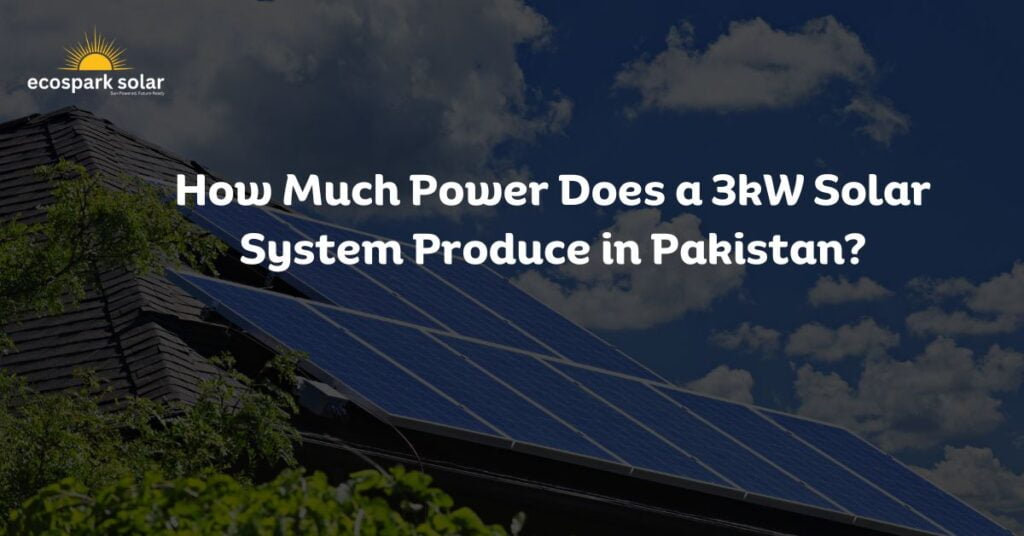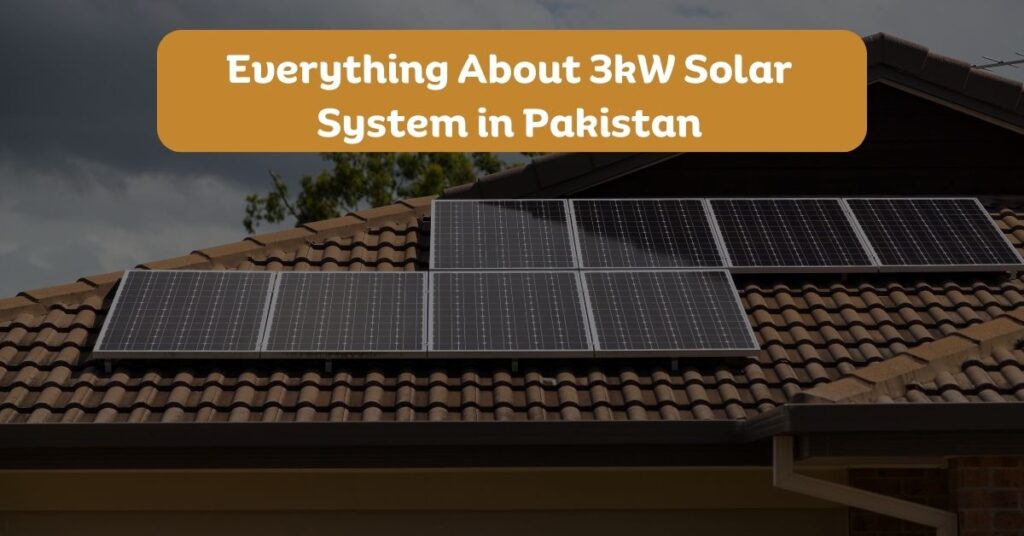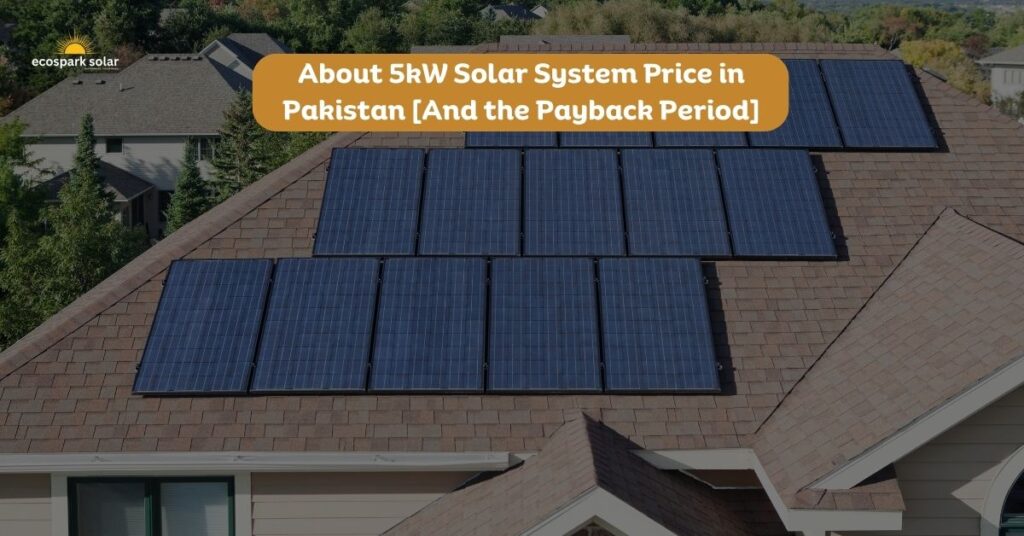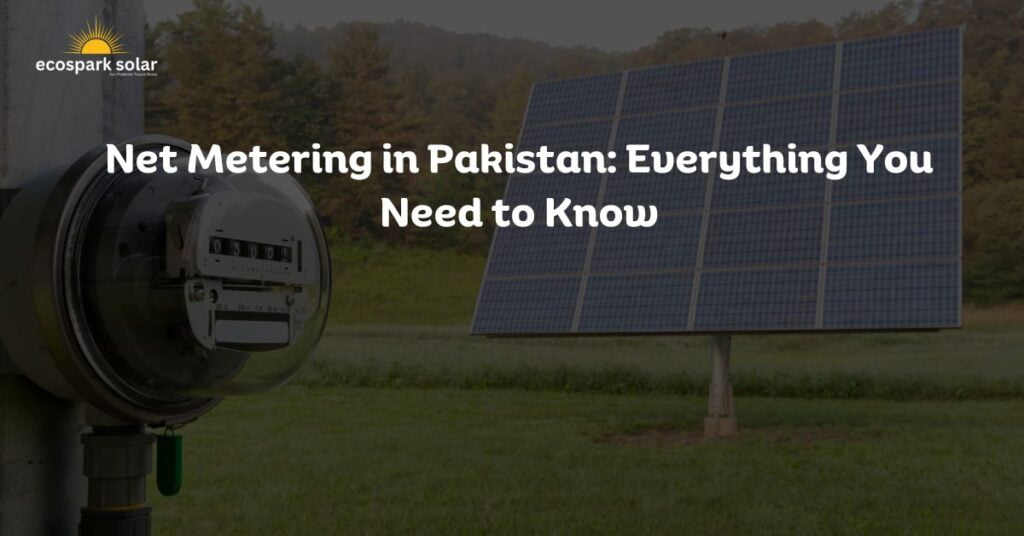3kW solar systems are ideal for those households or business with modest energy needs. If you are someone with modest energy needs and have decided to install a 3kW solar system, it is natural to ask: How much power does a 3kW solar system produce?
The short answer is: A 3kW solar system can produce between 300 to 360 units a month. However, the actual amount of power that a 3kW solar system produces in Pakistan will vary depending on a number of factors. Also, given the smaller size of the system and attached inverter, you can’t power everything with it.
Stay with us for a few minutes, as in this article, we will take a closer at the 3kW system production capacity.
To give you an idea, we will discuss:
- How much power does a 3kW solar system produce in Pakistan?
- What are some of the factors that affect the 3kW solar system’s production capacity?
- How many units does a 3kW solar system generate in Islamabad? And similarly, Karachi, Peshawar, Quetta, Lahore, etc.
- How to maximize the energy generated by a 3kW solar system?
We will start with the factors, as we will keep these factors into account when calculating the production of a 3kW system. You will get a better understanding of things once you go through the factors.
Factors Affecting Solar Power Production of 3kW Systems
Not all 3kW solar systems would give you the same power output. At some locations, the same system would have different power potential. In yet other scenarios, two different 3kW systems would give different outputs in the same location.
Why? Because of the following reasons.
Solar Irradiation in Your Region
The amount of sunlight that a solar array* receives is the most important factor affecting its power production. Pakistan receives an average of 5.5 kWh/m2/day of solar irradiance, which is enough to produce a significant amount of electricity. In simple words, 5.5 kWh/m2/day means 5 peak sun hours.
However, the amount of sunlight can vary depending on the time of year and the location where the system is to be installed. To give you an idea, Islamabad receives 5.5 peak sun hours per day. Read more about peak sun hours in our detailed guide to solar irradiance in Pakistan.
*When solar panels are combined, we call it a solar array. For example, the solar panel array of 5kW solar system would consist of 10 panels, each panel having 545 watts.
The Efficiency of Solar Panels
The efficiency of solar panels is another important factor affecting the power generation of solar systems. It is measured as a percentage of the sunlight that is converted into electricity. The average efficiency of solar panels in Pakistan is around 18%. However, there are some high-efficiency solar panels that can achieve efficiencies of up to 20%.
Always go for tier-1 solar panels—they are the most efficient and ensure that your system performs at its best. While calculating the power output, the efficiency factor is generally taken as 0.8 for high-quality solar panels. We will put that in the formula later in this article.
The Tilt Angle and Orientation of Solar Panels
The orientation of the solar panels also affects their power production. Solar panels should be oriented so that they receive the most direct sunlight. In Pakistan, the best orientation for solar panels is facing south.
Secondly, the elevation angle, also known as the tilt angle also matters. Ideally, it should match the latitude of the region where the system is installed. In Islamabad, it will be 33 degrees—30 would work as well.
You can read more about it in our guide to calculating the tilt angle and azimuth for solar panels in Pakistan.
Shading and Obstructions
Shading from nearby structures, trees, or other obstructions can also reduce the power output of solar panels. It is important to ensure that the panels are installed in locations with minimal shading to maximize energy production.
A solar system for everyone.
We’re customer-centric; we will find you a solution within your budget. Whatever your project size, you can always save with Ecospark Solar.
Dust and Debris on Your Panels
Lastly, your solar system must be clean—if it is not, the amount of sunlight absorbed will be affected. Make sure that there is no dust, debris, or bird droppings accumulated on your solar panels. Regularly inspect your solar panels; if there is dust, clean your solar panels. You do not have to do it every day—once every 6 months would suffice if you live an area that is not quite prone to dust.

How Much Power Does a 3kW Solar System Produce?
Based on the factors discussed above, a typical 3kW solar system in Pakistan can produce between 10 and 12 kWh of electricity per day. Per month, it would correspond to 300 to 360 units. This means that a 3kW solar system can produce enough electricity to power a small home or business that consumes around 300 to 350 kWh of electricity per month.
But how did we calculate this?
The formula for calculating the energy generated by a single solar panel is given below:
| Daily production = System capacity x Peak sun hours x Efficiency factor |
For a 3kW solar system, we will put 3,000 watts as the capacity of solar panels. For the sake of convenience, we will take 5 peak sun hours—a little less than what Islamabad receives per day.
So,
| Daily Production of 3kW System = 3,000 watts x 5 x 0.8 = 12 kWh (units) |
In some areas, the power generated could be higher. To know how much a 3kW solar system produces per month, simply multiply the daily production with 30.
| Monthly Production of 3kW System = 12 kWh (units) x 30 = 360 units |
How much power does a 3kW system produce in Islamabad?
As my experience shows, a 3kW solar system in Islamabad/Rawalpindi can produce an average of 10-12 kWh of electricity per day—or 300 to 360 units per month. This is due to the fact that Islamabad/Rawalpindi receives an average of 5.5 kWh/m2/day of solar irradiance. Quite a potential for solar power in the capital!
How much power does a 3kW system produce in Karachi?
A 3kW solar system in Karachi can also produce an average of 11-12 kWh of electricity per day. Per month, it becomes 330-360 units. Karachi receives an average of 5.2 kWh/m2/day of solar irradiance—almost our national average.
How much power does a 3kW system produce in Lahore?
3kW solar systems in Lahore are capable of generating an average of 10.2 to 11.5 kWh of electricity per day—roughly equal to what Islamabad can produce. This is due to the fact that Lahore receives an average of 5.4 kWh/m2/day of solar irradiance.
How much power does a 3kW system produce in Peshawar?
A 3kW solar system in Peshawar can produce an average of 9.8 to 11 kWh of electricity per day. This is due to the fact that Peshawar receives an average of 5.3 kWh/m2/day of solar irradiance. This is based on my personal experience with my clients.
How much power does a 3kW system produce in Quetta?
A 3kW solar system in Quetta can produce an average of 9.4 kWh of electricity per day. Note that this figure can go beyond 12 units a day in summer. This is due to the fact that Quetta receives an average of 5.1 kWh/m2/day of solar irradiance.
How much power does a 3kW system produce in Multan?
A 3kW solar system in Multan can produce an average of 11 to 13 kWh of electricity per day. Being in the south, Multan gets more solar irradiance than other cities in the north. On average, it receives 5.5 kWh/m2/day of solar irradiance.
It is important to note that these are just average figures. The actual amount of power a 3kW solar system produces will vary depending on the abovementioned factors. Please also keep in mind the seasonality and weather conditions. Solar systems often generate more power in summer, thanks to longer days. Since the system is exposed to sun for fewer hours in winter, the production capacity is a bit less.
If you are considering installing a solar system in Pakistan, it is important to consult with a solar installer to get an accurate estimate of how much power a 3kW solar system will produce in your specific location.
Cost and Payback Period of a 3kW Solar System in Pakistan
The cost of a 3kW solar system in Pakistan varies depending on the quality of the solar panels and the inverter. However, the average cost of a 3kW solar system is around Rs. 600,000.
If yearly savings are taken as Rs. 100,000, the payback period of a 3kW solar system in Pakistan would be 5 to 7 years. This means that you will enjoy free electricity after 7 years—for 18 more years!
What is the payback period, and how to calculate it? Read our comprehensive article on calculating the payback period for different systems in Pakistan.
How to Make the Most of Your 3kW Solar System?
To maximize the power production of a 3kW solar system in Pakistan, consider the following optimization tips:
- Choose high-quality solar panels with higher efficiency ratings. Various types of solar panels are available in the market—always go for the highest quality.
- Ensure proper panel orientation and tilt angle. We talked about how important it could be!
- Regularly clean and maintain the panels to remove any dust or debris.
- Monitor system performance to identify any issues or inefficiencies.
- Minimize shading by selecting an appropriate installation location.
How Much Power Does a 3kW Solar System Produce in Pakistan: Conclusion
A 3kW solar system is a good option for small homes and businesses in Pakistan. It can produce enough electricity to meet the needs of small households and businesses. It is a cost-effective way to reduce electricity bills, increase energy independence, and help the environment.
If you are considering installing a 3kW solar system in Pakistan, no one can do it better than our team. At Ecospark, it’s all about making our clients happy with their systems. And we mean every word of it!



